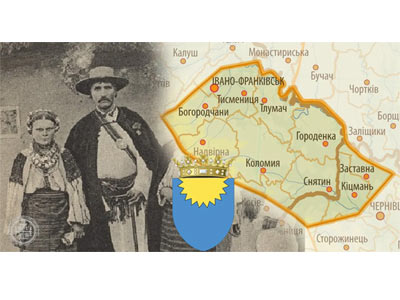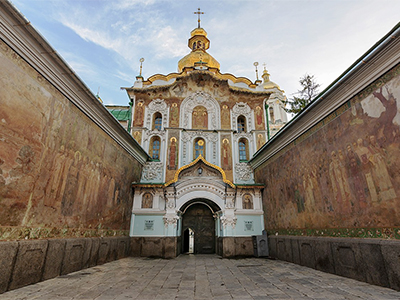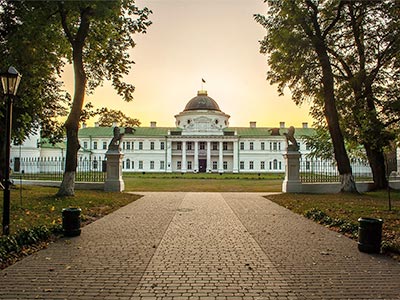 12.12.2022
Pokuttia
12.12.2022
PokuttiaTerritory of Pokuttia
Pokuttia is known for its highly fertile soil, tidy villages and green orchards. Pokuttia covers an area of 3,083 km2 within the boundaries of Ivano-Frankivsk region. The population now stands at 359.2 thousand, including urban population (105.3 thousand) and rural population (253.9 thousand). There are 5 towns, 5 small towns and 227 villages. The population density in Pokuttia is 1,094 people, in towns it is 2,100 people. There are 76 ares of land per person, including 57.8 ares of arable land. The total area of agricultural land in Pokuttia is 188,977 hectares, including 143,776.5 I hectares of arable land (i.e. 76 percent of the total area).
Population of Pokuttia
According to the census data i of 1857, there were 234,495 people in Pokuttia, including Kolomyia and the rural population which reached 196,138 people I (83.4 %). Pokuttia was inhabited 40 thousand years ago. In the first millennium AD and in the times of Galician-Volyn Principality it was a densely populated land. On the territory of almost every contemporary populated area archaeologists have found ancient settlements. However, the Tartar- Mongolian invasion carried out in the middle of the 13th century and the later Tartar incursions were constantly devastating the towns and villages of that flourishing land. The following settlements are mentioned in the first records: Tysmenytsia (1143), Sniatyn (1158), Tlumach (1213), Kolomyia (1240), Hvizdets, Staryi Hvizdets, Verbivtsi (1373), Strilche, Malyi Hvizdets (1375), Nezvysko, Rohynia (1378), Pyadyky (1397), Tovmachyk (1398) etc. During the 14th-18th centuries 236 settlements were established on the territory of Pokuttia.
Pokuttia is situated between the Dnister and the Prut. In the east its lands enter Bukovyna; in the west it is limited by Stanislav lowland. According to the contemporary administrative-territorial division, the territory of Sniatyn, Horodenka, Tlumach, the north-eastern part of Tysmenytsia, the majority of Kolomyia (without the southern part) districts belong to Pokuttia.
The name “Pokuttia”
The name “Pokuttia” can be found in the written records of the 14th century. A number of hypotheses have been put forward concerning its origin: from a small town of Kuty; from ‘pokuty’ (i.e. the atonement of sinners); from the land of “Hut”, etc. 8 The Polish researchers of the 19th century based their hypothesis on the geographical location of the land which was situated at the end of the former Rzech Pospolyta, and, finally, the last but not the least is the hypothesis based on the fact that Pokuttia is situated between the Dnister and the Prut forming an angle, i.e. Pokuttia is the land the territory of which makes the angle between the two rivers. The inhabitants of Pokuttia speak Pokuttia-Bukovyna dialect, which is also spread to the western part of Chernivtsi region. The anthropological measurements were not taken in Pokuttia.
Soils
The soils of Pokuttia are the most fertile in the region. Therefore, agriculture and cattle farming are the main occupations of the Pokuttians. Gardening and fruit farming are rather popular here as well. The main industry is the processing of foodstuffs; the major trades are the manufacturing of tools and clothes, carpentry and joinery. Agricultural enterprises are the most numerous businesses.
❤Join us on one of our tours Discover Kolomya, Horodenka and other places of Poluttia!
Traditional costume

Wedding dress in Pokuttia
The Pokuttia traditional costumes are restrained and attractive. The main elements of women’s wear are long embroidered blouses, woolen “opynkas” (skirts), wide and narrow belts (worn at the same time), a great deal of adornments. The women’s wear of Pokuttia is among the best samples of Ukrainian clothes for women. Men wear white homespun shirts and trousers.
Farming
Agricultural and cattle farming products are the staple foods of Pokuttia. Farms were largely self-sufficient, i.e. every peasant family provided themselves with food from their own households, since they were living on fertile black soils. The Pokuttians always eat better than Hutsuls and Boikys. Traditional Pokuttia recipes are rather complicated and tasty.
Buildings
The traditional folk building of Pokuttia has many local peculiarities. The villages of Pokuttia were mostly situated in the lowlands. They usually had the irregular system of planning with a network of curved and narrow streets, which sometimes were blind alleys. Farmhouses and household buildings were rather similar to the houses in Podillia and Central Ukraine.
-
 27.02.2024
World of pysanka
Embark on a journey into the captivating world of Pysanka, the Ukrainian...
27.02.2024
World of pysanka
Embark on a journey into the captivating world of Pysanka, the Ukrainian...
-
 29.01.2024
Exploring the Treasures of Kyiv’s Lavra Monastery
In the heart of Kyiv lies the venerable Lavra Monastery, a testament...
29.01.2024
Exploring the Treasures of Kyiv’s Lavra Monastery
In the heart of Kyiv lies the venerable Lavra Monastery, a testament...
-
 13.01.2024
Kachanivka, Eden on Earth
Rich in history, it hosted renowned artists, notably poet Taras Shevchenko.
13.01.2024
Kachanivka, Eden on Earth
Rich in history, it hosted renowned artists, notably poet Taras Shevchenko.

